Kitchen countertop standard height - what is it and why does knowing about it make your home work better?
Kitchen countertop standard height is an industry and expert secret...until now. But is it a golden rule, and what does it mean?
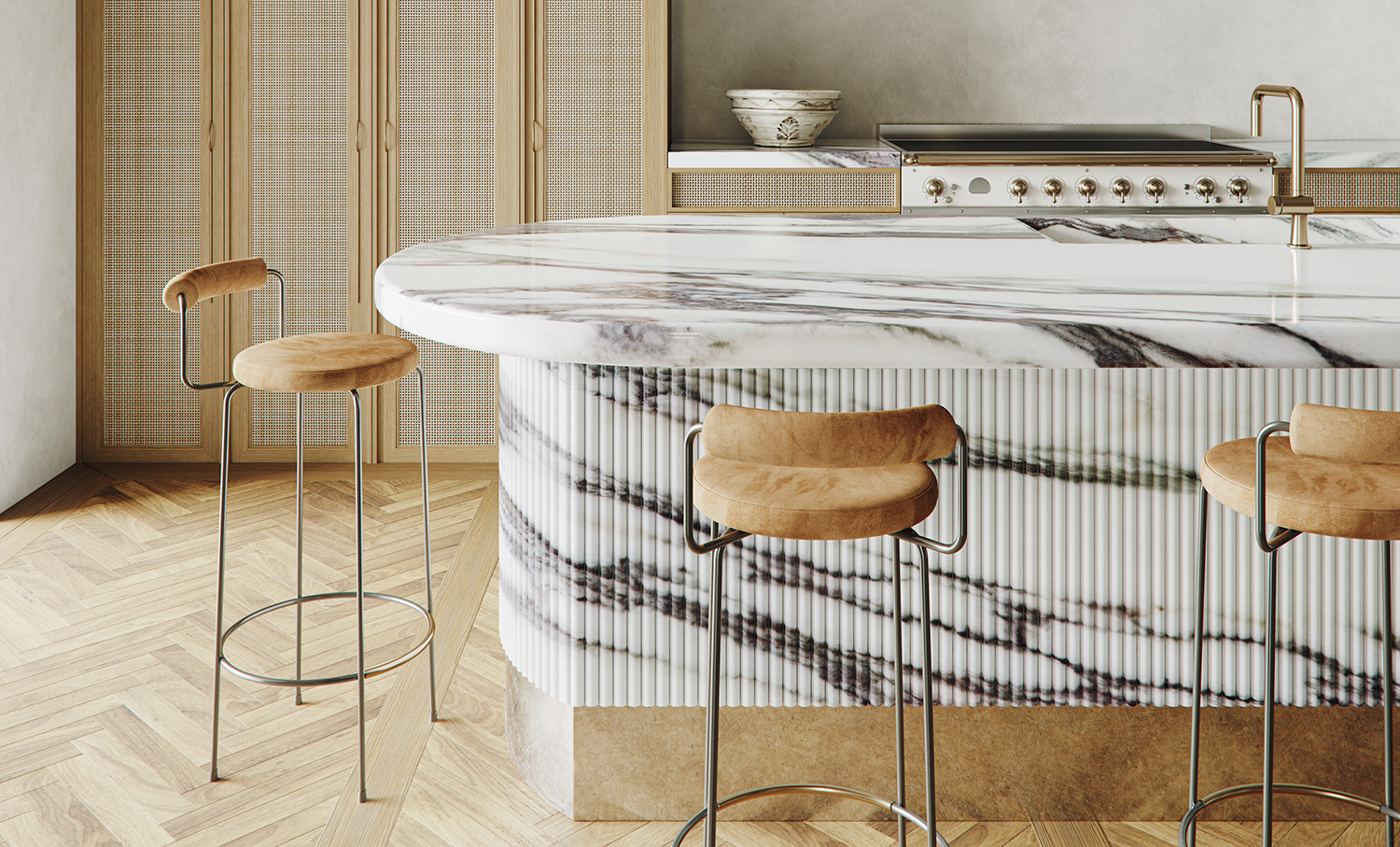
When designing a new cooking space, the kitchen countertop standard height is an important factor to take into consideration.
Why? Well, it was determined on the average height of the user, providing a comfortable height for carrying out common kitchen tasks, like preparing and cooking meals.
Deviating from the standard kitchen countertop height may make it harder to replace integral kitchen appliances, as well as potentially affect a resale value if you're ever looking to put your home on the market.
We've tapped two kitchen experts to explain more about the kitchen countertop standard height so you're fully prepared for your next renovation.
What is the kitchen countertop standard height?

The standard kitchen countertop height is 36 inches from the ground, usually with a 0.8-1.2 inches thick surface.
'This was designed to be the appropriate height for cooking and preparing food for the average-sized person when standing,' explains Jonathan Stanley, VP at Caesarstone.
'This makes the counter height ergonomic for stirring or kneading or chopping whilst also being a safe height for lifting heavy pans or moving hot items like saucepans of boiling water.'
Is it a good idea to stick to the kitchen countertop standard height?
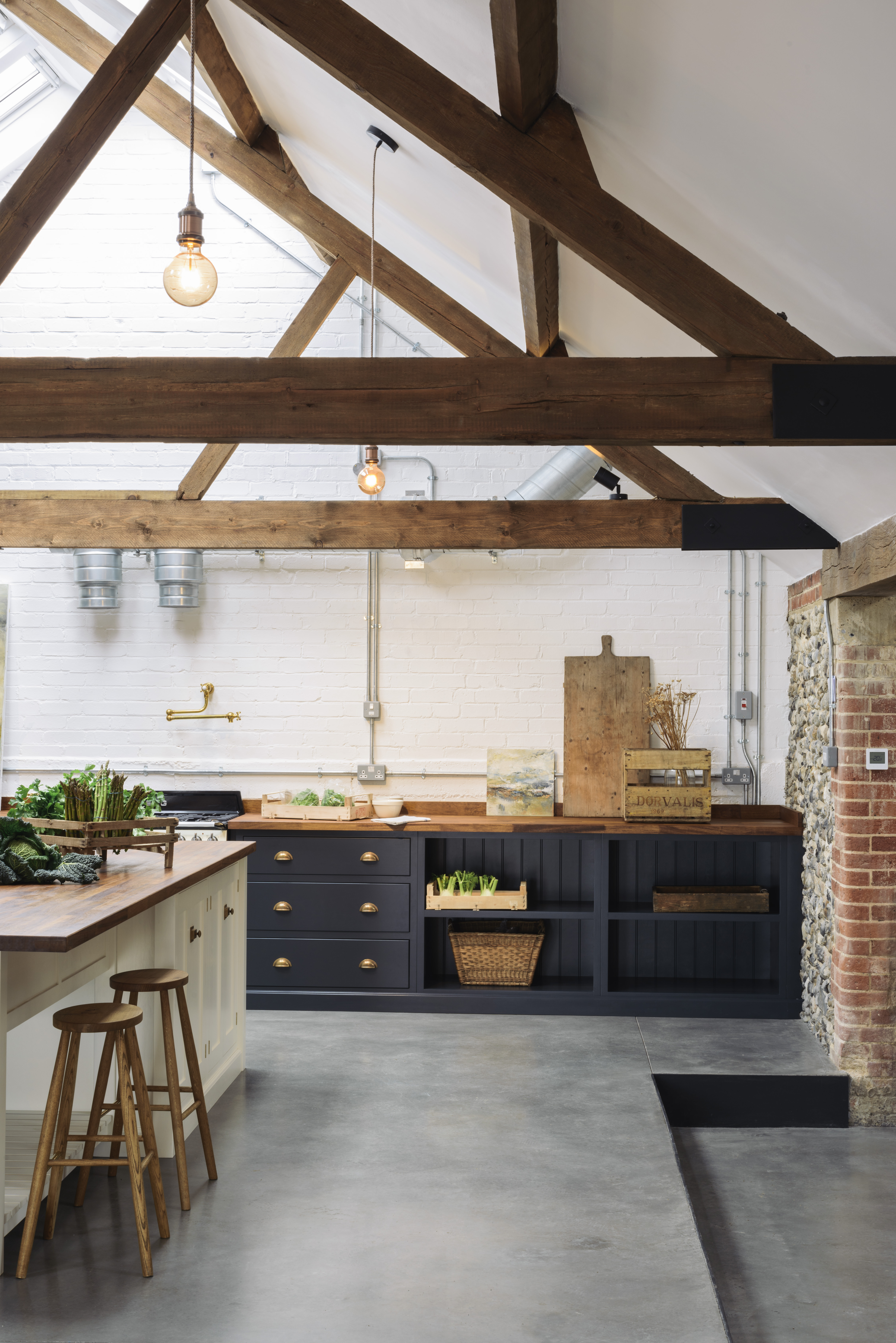
'It’s key to stick to the standard height measurements as most kitchen appliances are designed to slot underneath the worktop and therefore have a minimum and maximum height,' says Nicolle Whyte, Kitchen Designer for Olive & Barr.
'This standard of measurement also allows you to easily replace appliances in standard sizes, should you wish to further down the line.'
Caesarstone's Jonathan Stanley agrees it can cause problems with integral kitchen appliances: 'Under counter fridges, freezers and washing machines are designed to be the correct height to sit under the worktop and particularly if a lower worktop is chosen this can limit the options available,' he says. 'However, If a lower or taller worktop would be your ideal solution, then don’t let that stop you, there are many workarounds if you’ve got the budget to go bespoke.'
Sticking to this height also makes buying off-the-shelf cabinetry an easy option.
Jonathan comments: 'All off-the-shelf cabinetry is designed so that the worktop will sit at this height. This will often mean less expensive options are available. You could change the worktop height by getting completely bespoke cabinetry built, but this is a much more expensive option.
'However, as modern kitchen ideas have expanded to accommodate more recreational activities and home working, as well as multi-generational occupants, it is becoming more normal to see worktops at different heights to cater for these contemporary requirements.'
Will a different kitchen countertop height affect resale?
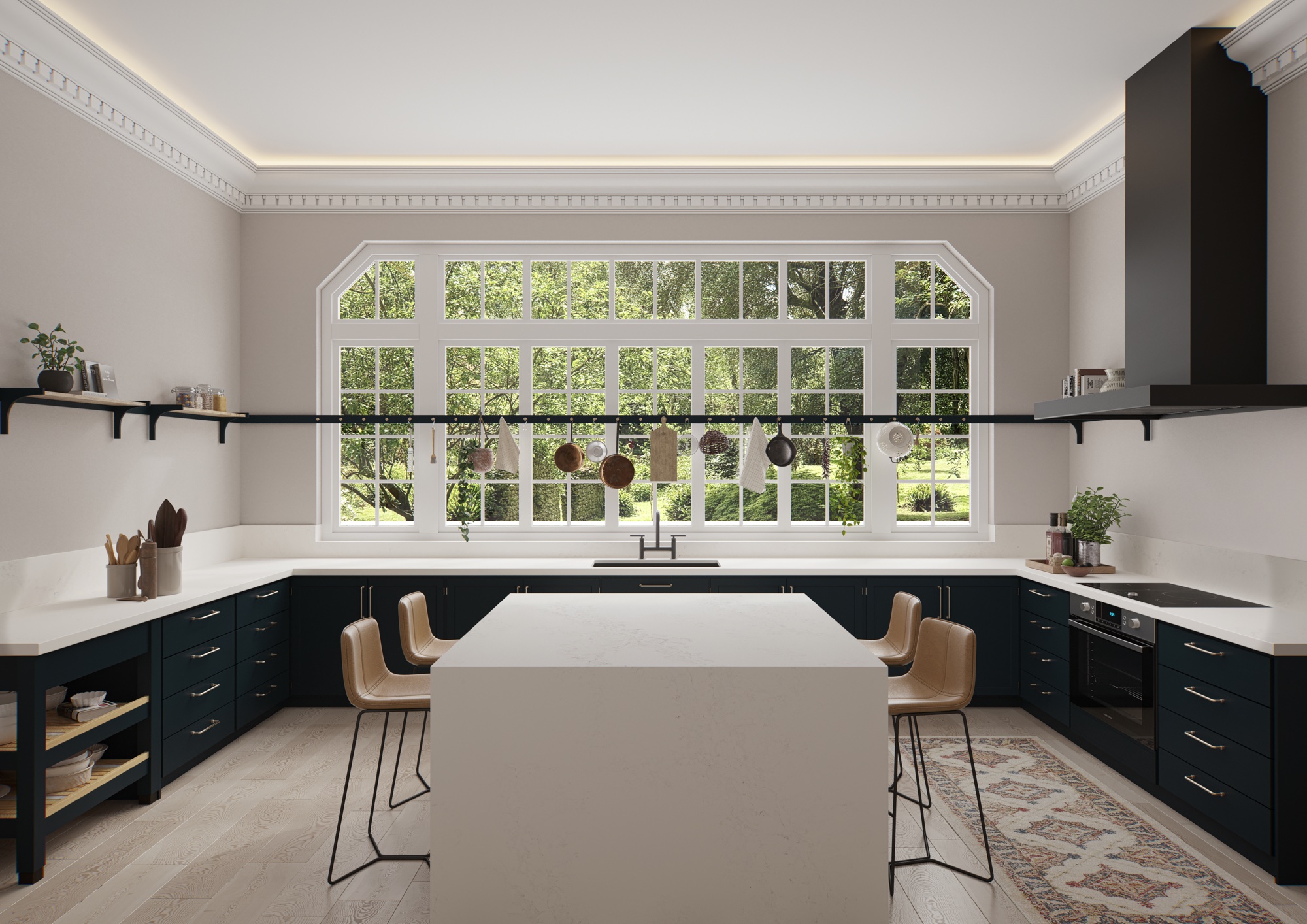
Changing the kitchen countertop height could allow you to express creativity, but it could potentially cause issues later down the line.
'Bespoke kitchens offer a wealth of opportunities to be creative and design your kitchen of dreams,' says Olive & Barr's Nicolle Whyte.
'However, we would always advise keeping the height to the standard, as not only will it make it simpler and more cost effective for finding suitable appliances, but it means that should you wish to sell the house, a potential buyer won’t feel put off by the kitchen feeling too tall or low down.'
Jonathan Stanley believes an extreme deviation could affect a sale, explaining: 'Whilst a small height difference may not be noticeable to the average house buyer, anything more extreme could impact the viewer's decision, but this applies to most extreme interior design decisions in any room in the house.
'You could argue that designs would have to be very far from standard to really offer potential purchasers a true bargaining chip. The condition of the kitchen is likely to be as, if not more, important, so investing in good quality materials that will last your lifetime with the kitchen as well as the next owner will now pay you back.'
Do remember that a bespoke option may not suit the next buyer. Potential buyers could be left wondering if they’ll need to replace the kitchen entirely, which may mean a lower offer.
Are there any times you might break the standard kitchen countertop height rule?
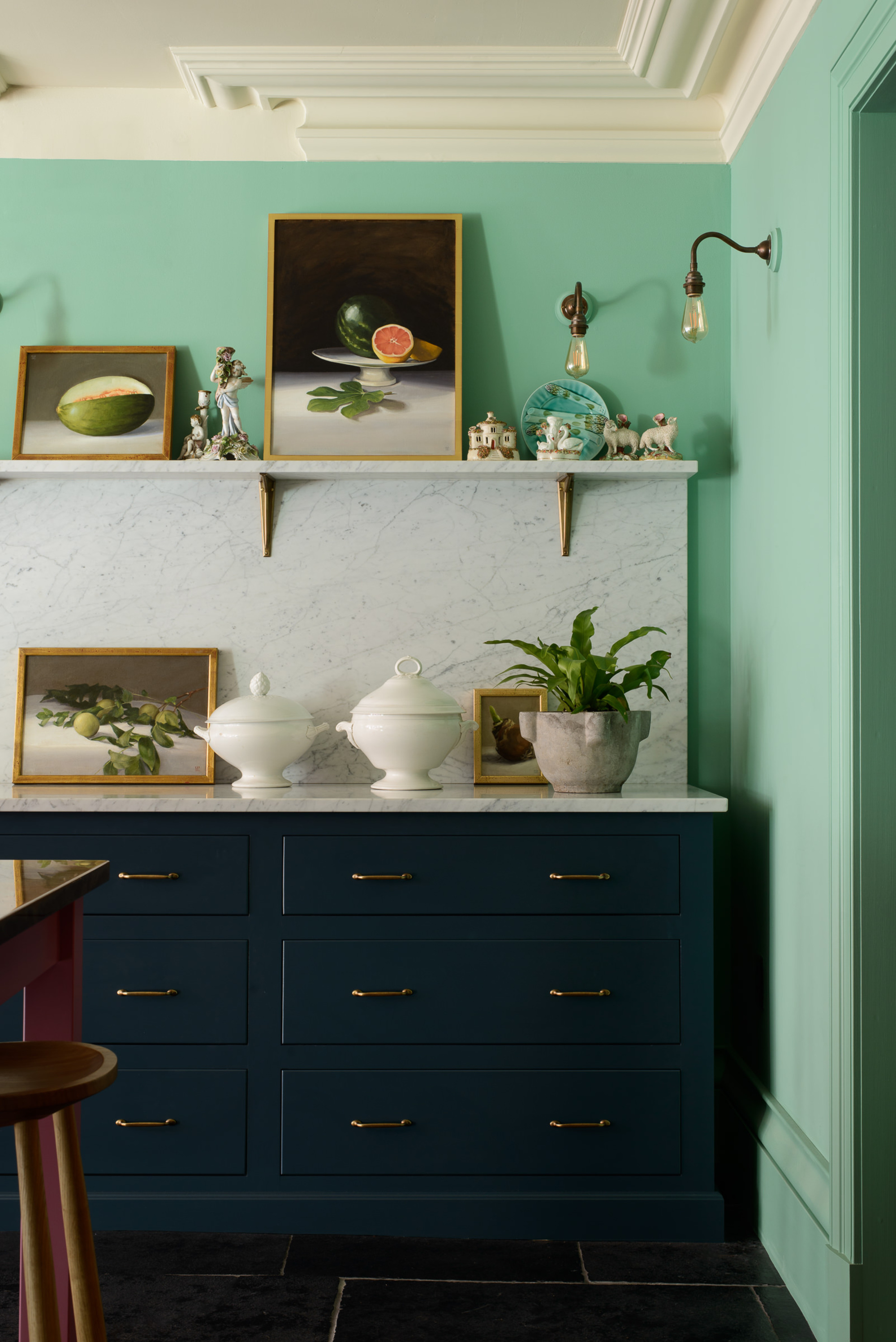
'There are certainly exceptions to this rule,' states Jonathan. 'The standard kitchen countertop height is based on the average person’s height and is made with the assumption that they are able to stand at the countertop.
'This is hugely limiting for those who may be in a wheelchair or anyone whose height varies greatly from what is considered the average person’s height.'
He adds: 'It may well be worth the alterations if standard height worktops would be a significant limitation to using the kitchen and there are brilliant kitchen designers are working specifically in these areas.
'Multi-generational living is also becoming more common, which can bring its own design challenges when thinking about spaces suitable for children, adults and grandparents, all of whom need to be able to move and work freely in the space.'
And Nicolle Whyte concurs, adding: 'There are always exceptions to the rule, and it’s important that your kitchen ideas work for you. If a homeowner is taller and prefers higher cabinetry for a more comfortable setting, we would look to find a solution by creating a kitchen island that was higher while being mindful to place the appliances within the main part of the kitchen.'
Does the kitchen island have to be the same height?
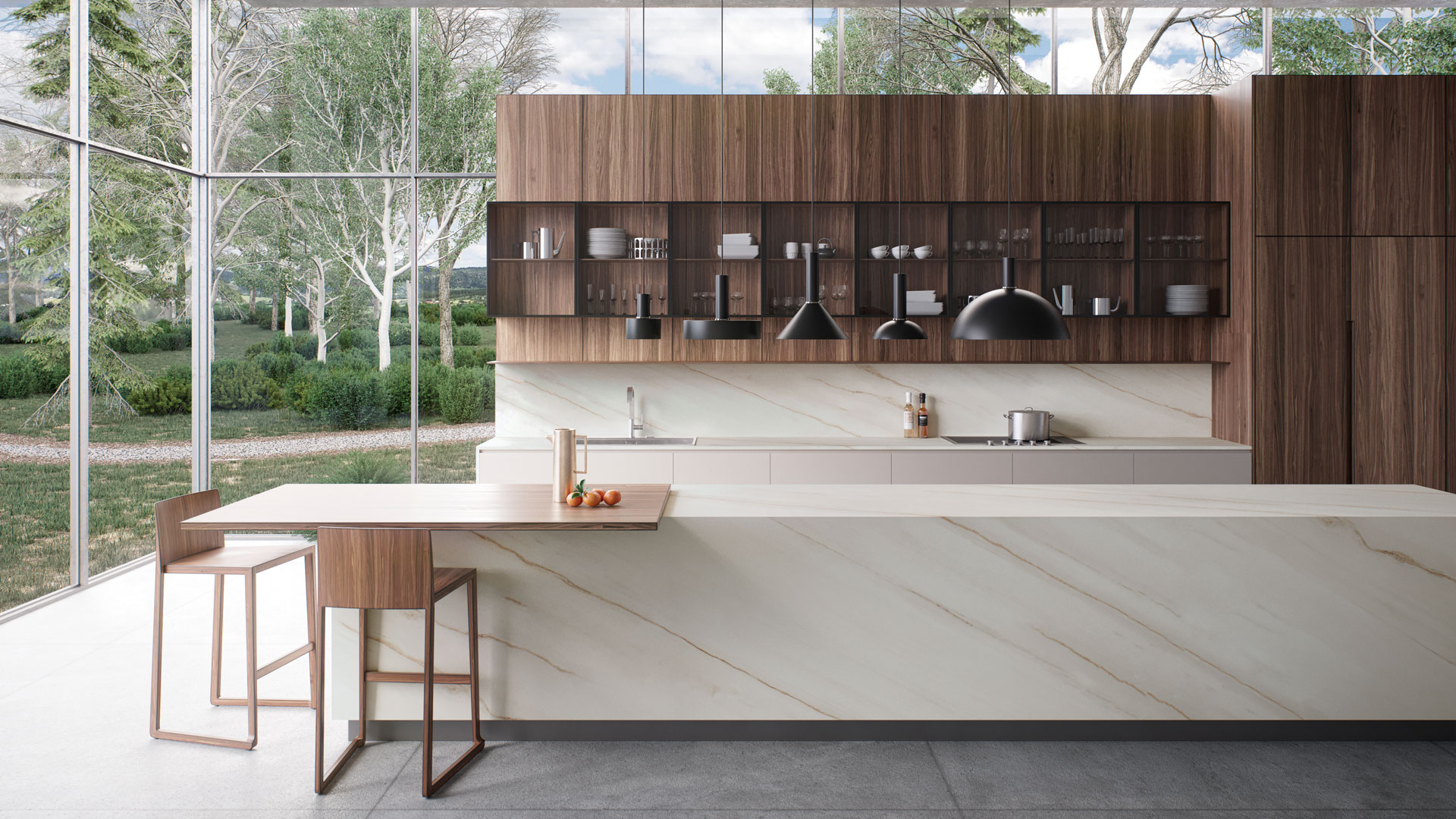
When it comes to kitchen islands, there is no hard and fast rule, and the height of your island really depends on how you are going to use the space.
'If you intend to use the island for prepping food, washing up or cooking on the hob, then it’s a good idea to keep it the same height as the rest of the counters,' says Jonathan.
'However, if you intend to use it for storage and a breakfast bar then increasing or lowering the height could be an option. It’s still advisable to check the height proposed alongside your bar stool or chair to ensure the ratio feels right.
'Another option is to only elevate part of the island worktop, dedicating an area to kitchen activities and a higher area to eating or socializing.'
Olive & Barr's Nicolle Whyte reiterates this point, suggesting double level kitchen islands with seating as a great multifunctional option. She says: 'Kitchen islands can be the same height as the rest of the kitchen if they are both the standard height.
'However, it isn’t essential, a kitchen island can be customised to suit a homeowner’s everyday needs and preferred style.
'A split-level counter provides the best of both worlds, with one part ideal for preparing food, while the taller section can be used as a breakfast bar or a place to be gather the family or host guests.'
Be The First To Know
The Livingetc newsletters are your inside source for what’s shaping interiors now - and what’s next. Discover trend forecasts, smart style ideas, and curated shopping inspiration that brings design to life. Subscribe today and stay ahead of the curve.
Ruth Doherty is a lifestyle journalist based in London. An experienced freelance digital writer and editor, she is known for covering everything from travel and interiors to fashion and beauty. She regularly contributes to Livingetc, Ideal Home and Homes & Gardens, as well as titles like Prima and Red. Outside of work, her biggest loves are endless cups of tea, almond croissants, shopping for clothes she doesn’t need, and booking holidays she does.
-
 Turns Out the Coolest New Café is Actually In Your Kitchen — Here's How to Steal the Style of TikTok's Latest Trend
Turns Out the Coolest New Café is Actually In Your Kitchen — Here's How to Steal the Style of TikTok's Latest TrendGoodbye, over-priced lattes. Hello, home-brewed coffee with friends. TikTok's 'Home Cafe' trend brings stylish cafe culture into the comfort of your own home
By Devin Toolen Published
-
 5 Bathroom Layouts That Look Dated in 2025 — Plus the Alternatives Designers Use Instead for a More Contemporary Space
5 Bathroom Layouts That Look Dated in 2025 — Plus the Alternatives Designers Use Instead for a More Contemporary SpaceFor a bathroom that feels in line with the times, avoid these layouts and be more intentional with the placement and positioning of your features and fixtures
By Lilith Hudson Published